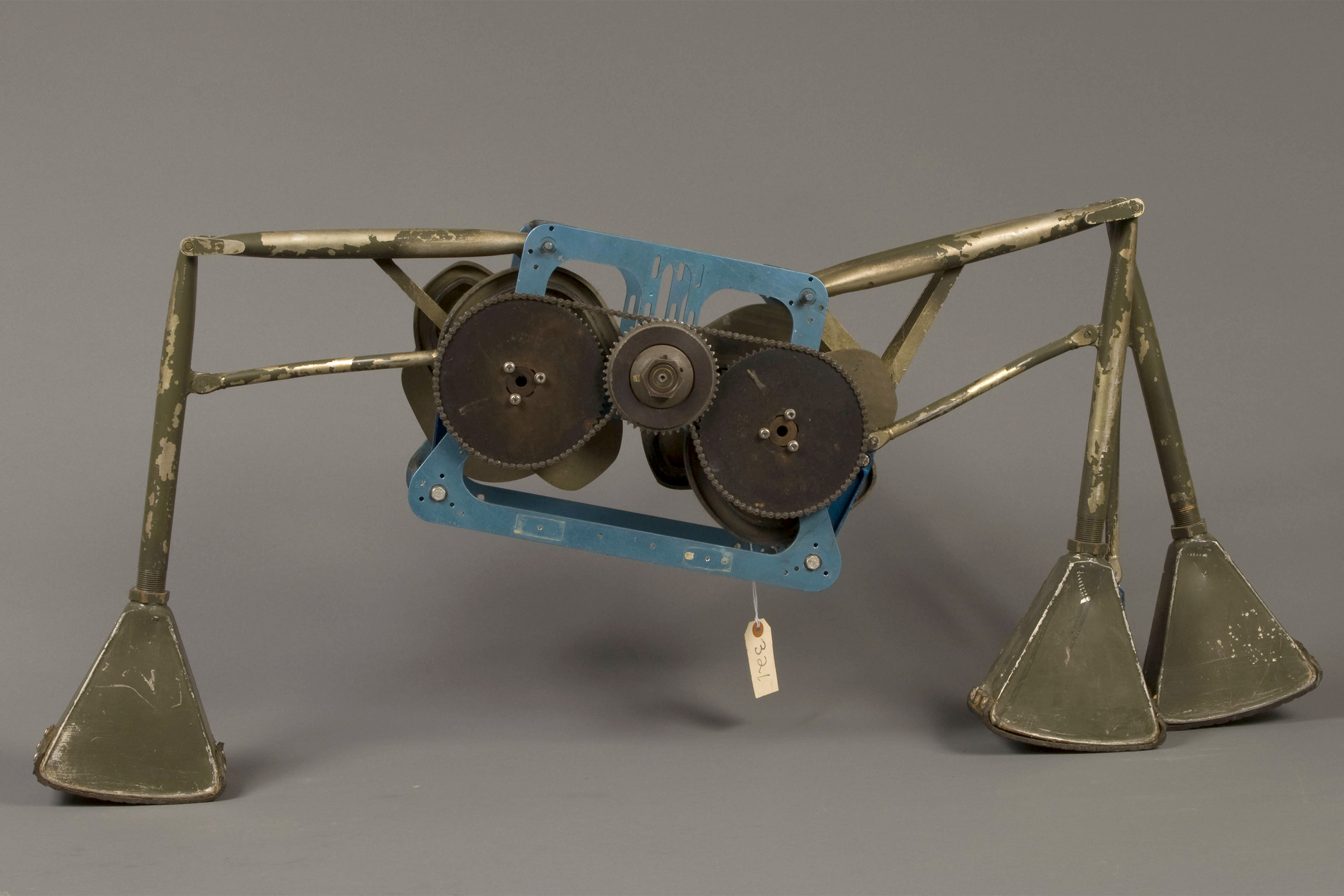Taking Measure
Just a Standard Blog

Any idea what this thing is? Because we're stumped.
The underground storage shelves of the National Institute of Standards and Technology (NIST) Museum are filled with loads of charmingly weird objects accrued throughout more than a century of scientific work. However, the original purpose of quite a few of these objects is lost in time. They are mysteries. Mysteries wrapped in riddles wrapped in … a thin layer of dust.
Welcome back to Unidentified Museum Objects, our ongoing quest to identify our basement-dwelling enigmas!
A railroad tale
Our most-recent installment elicited many responses. Read on for their comments, along with a new batch of head-scratchers from the NIST Museum.
T. Jach writes:
Item 0554 is clearly a frequency signal meter that is centered at 25 hertz. The indicator at the top is a series of reeds that have slightly different lengths. The reed that is in resonance with the input signal vibrates the most. The meter has a very narrow range, which would be consistent with using the indicators to regulate, for example, an alternator that operates at 25 hertz.
J. Proctor writes:
Regarding item 0554, the Pennsylvania Railroad (and others?) experimented with trains powered by 25-hertz electrical power in the early 1900s. They had a generator at Pennsylvania’s Safe Harbor Dam which generated AC power at 25 hertz for the railroad. Could be related to that.
D. Lilly writes:
Item 0554 is a switchboard meter that appears to have been saved as a souvenir and mounted. They were used, and some still are, at many places, such as generating stations and substations and in railroad equipment. As a test technician, I worked on the equipment at the Safe Harbor and Holtwood dams’ generating stations and at some Pennsylvania Railroad substations. I probably used an identical meter.
M. Mendenhall writes:
Item 0304 is the insides of a classical torsion galvanometer [an instrument used for detecting and measuring electric current]. It is missing a lot, including the magnet and a mirror which would be suspended below the wire coil. A projector would project light on the mirror, which would reflect back onto a scale to measure the deflection of the mirror.


New mysteries!
Item 0373:
The best guess we have for this one is “possibly a floor slip-resistance tester.” It’s also missing a leg. All I know is I don’t want to turn my back on it.

Item 0002:
Turns out we know a fair bit about this one, except for what it actually is or does. It was made by Enrico “Hank” Deleonibus, a former glassblower at NIST. He purportedly made it for Joseph Ritter, a NIST researcher in the Inorganic Materials Division around 1970. It’s about 27 centimeters x 5 centimeters.

Item 0268:
It’s made of wood, it’s wrapped with some wire and it’s a bit bigger than a soccer ball. Perhaps a prototype device to finally get to the bottom of how that “walking the dog” yo-yo trick actually works.

So, what are these things? Got any ideas? If you have a plausible (or funny) theory, leave it in the comments, and we’ll publish it in the next edition of Unidentified Museum Objects!
About the author
Related Posts
Comments
I seem to remember this object is an early version of the LD3 below. Maybe around 1940's to 50's. It should be a wind up style, Attaching the heavy stuff they wanted to move to the bottom, lowered the center of gravity. It should be a "proof of concept" model. Maybe DARPA can shed some further info. DIST may have used this to pull a long cable or measure in a a hazardous location.
Legged Squad Support System (LS3)
https://phys.org/news/2012-12-legged-squad-ls3-darpa-four-legged.html
Re Item 0373 - I think it is a model to explain how this works:
0373 - The legs look like a similar type used in Theo Jansen's Strandbeest. Please make a video of the rotor turning to see how the legs move. Theo used a computer evolutionary type model in the 90's to perfect the rotational to linear motion of his leg design. Check Theo's inventions out at : http://www.strandbeest.com/beests_leg.php
0373: It would be nice to see a photo of the other side of the mechanism. Otherwise I was thinking some sort of "walking thing" like the others, though I've never seen the walking duck before and this could definitely be behind trying to explain the friction physics of that.
0002: Bong, vacuum gauge, Crookes Tube variant, some sort of very early mass spectrometer prototype (when were they invented?)
0268: The most interesting of all, it appears when looking closely (as much as the photo allows) that it is very deliberately missing anything ferrous / magnetic like nails, screws, staples, etc. If so, the twin coils mean it's definitely a crude magnetic field measurement device perhaps for the earth's since there is no obvious place to put a "sample". (Note that "crude" doesn't mean "not modern" but rather "good enough for a quick check if we have the right idea and are in the ball park".)
Item 0373...
The treads/souls on the bottom of the feet may suggest it could move a sheet along a surface. A few (5) images with the front cog rotated 90 degrees each would allow me to make an animation; if that has little effect on the position of the legs, the same series of images with another cog sequenced might suffice to suggest the walking relationship of the legs. The rectangular shadows (with screw holes?) on the lower blue strut suggest original mounting points.
0373 Hard to tell without seeing the other side of the device. Could it have been an evaluation of a way to test wear on carpet, I would look for other tools used for carpet wear testing of the same era. Or shoe sole wear.
0002 Looks like a way to heat something up, maybe for testing ingredients?
0268 Magnetic field interaction tester? Inductance analyzer?






0268: My guess would be some sort of wire-winding mechanism based on how it looks like it could turn. I do notice a smaller spool on the outside and larger one in the middle, maybe some sort of mechanism where you can wind one by unwinding the other. Looks like it was built to be very sturdy for some reason. Maybe a way of winding up really tight spools of wire for some reason, pull rope off the large spool to wind wire on the small one very tightly?
0002: A rather interesting bong maybe? Around 1970, that would fit, and we all know what scientists are like off the clock... In all seriousness, if it's know who made it and who it was made for, I'd think it could be tracked down more conclusively. Even if retired, if either of those people are still alive, you could hunt them down and ask them. Or ask people who worked with this Joseph Ritter about what his research was, or find anything written by him, if you can find what experiments he performed that would give more clues as to what this device may have been used for.